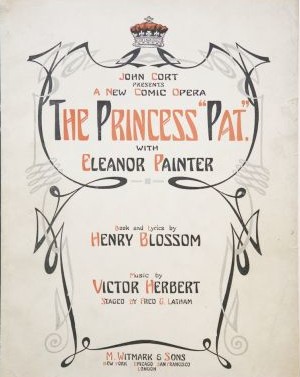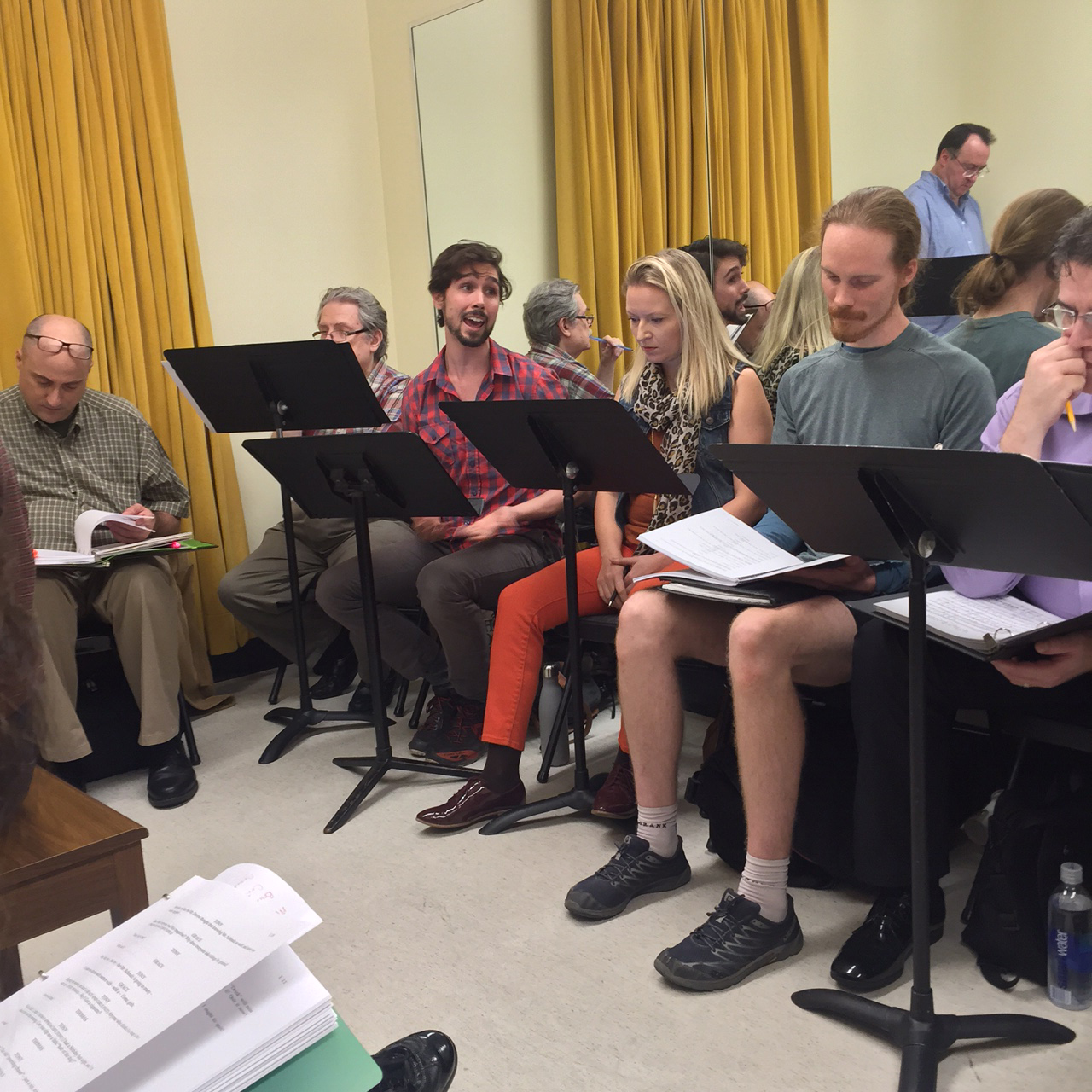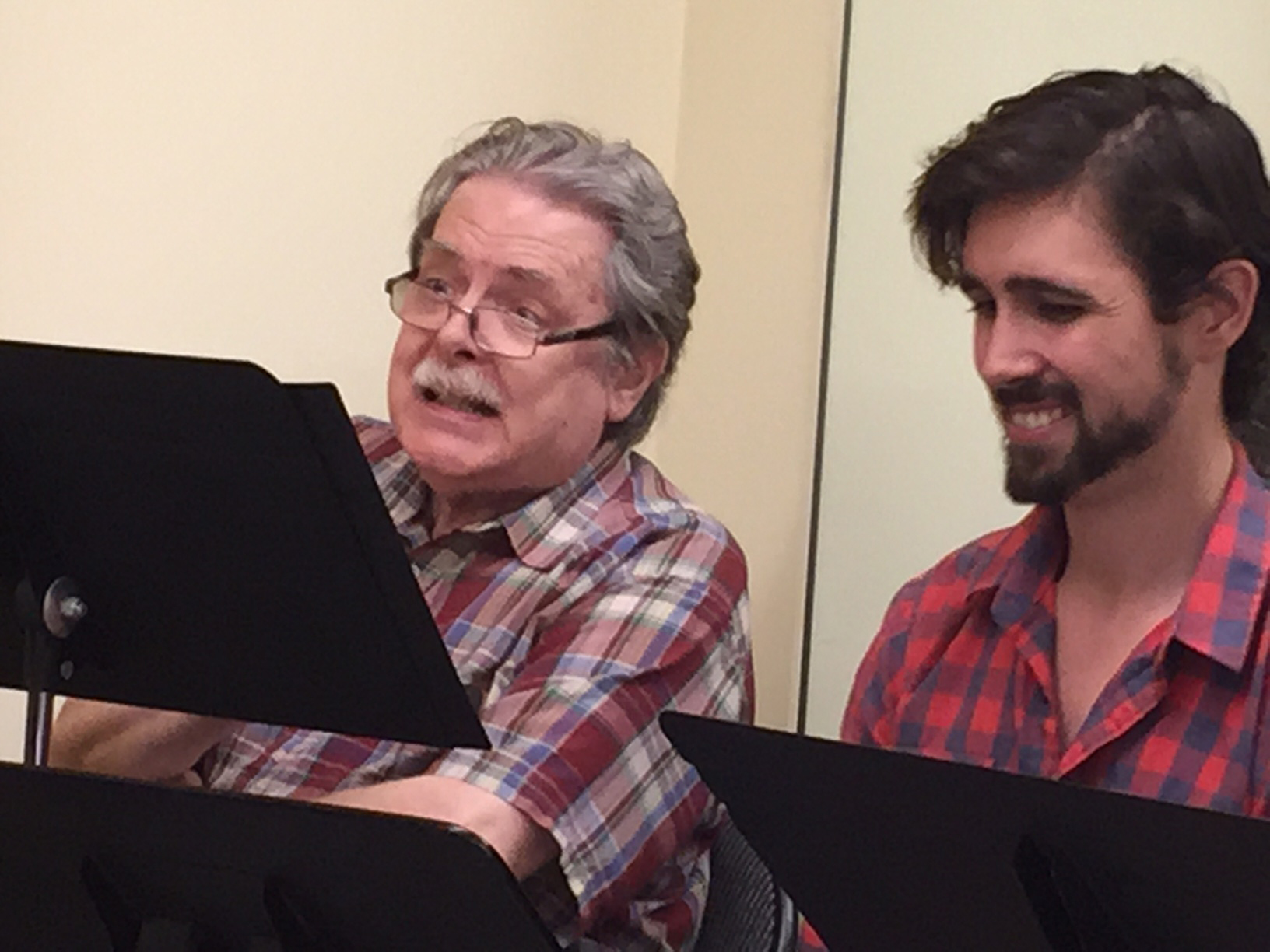Ron Sharpe
Victor Herbert Renaissance Project LIVE!
3 November, 2016
“A themed season? Who does themed seasons anymore?” muses Alyce Mott, Artistic Director of the NYC-based Victor Herbert Renaissance Project LIVE! The question could be rhetorical, though. Victor Herbert composed an astonishing 43 operettas over the course of 30 years (compared, for example, to the six of Sigmund Romberg or the 14 of Gilbert & Sullivan). So narrowing down the choice by theme among this embarrassment of riches seems a logical strategy.
Poster for Herbert’s “Princess Pat.” (VHRP Live!)
The theme for 2016/17? Ireland! The season begins in November with the company’s fresh take on the 1915 comedy The Princess Pat. In March VHRP Live! will present Son of Dublin, a concert of songs by both Herbert and his grandfather Samuel Lover (1797-1868), celebrated Irish Music Hall composer, poet, and philosopher. The season concludes in April with a centennial production of Herbert’s 1917 romantic ode to Ireland, Eileen.

Poster for the original Broadway production of “Eileen.”
Herbert’s Irish connection was strong, despite a remarkably cosmopolitan childhood spent mostly in London and Stuttgart. So it is not entirely surprising that he might periodically look to Ireland for inspiration.
In addition, turn-of-the century America was the home to millions of first-generation Irish-Americans for whom “The Emerald Isle” was an object of sentimental attachment. The Irish connection – whether in a comic song or a soulful ballad – had a ready-made audience, a fact surely not lost on the savvy Mr. Herbert.

Victor Herbert and Therese Herbert-Förster, 1887.
Herbert’s own emigrant experience, however, was somewhat more rarefied than most. By 1886 his wife, soprano Therése Herbert-Förster was under contract by musical luminaries Walter Damrosch and Anton Seidl to sing principal roles for the Metropolitan Opera. As part of the negotiation it was stipulated that her husband would be hired as cellist. The Herberts would arrive in New York in style and immediately assume positions of prominence in the music community, somewhat remarkable for a young couple still in their twenties.
With Therése enjoying distinct success, Herbert immersed himself in performing and teaching, and began to gravitate toward conducting and composing mostly serious classical works. But his connection with light music was soon reinforced when in 1888 he was chosen to conduct the New York Philharmonic in a series of high-profile summer concerts in Brighton Beach, Brooklyn. In 1894 Herbert’s first operetta, Prince Ananias, was premiered and he was on his way to celebrity.
The period from around 1900 to 1920 finds Victor Herbert at his most successful and prolific, creating an amazing profusion of memorable stage works. This coincidentally provides Mott and her VHRP Live! company the opportunity to mount centennial productions of many of them. The hundred-year anniversary of Eileen (1917), it turns out was the original inspiration for the Irish theme.
But unlike most musicals that can be presented without any alteration from standard scores, presenting Herbert operettas for a modern audience can be a challenge. [Claims Alyce Mott.] The Princess Pat is no exception. Herbert’s music was so well-crafted and so immensely popular that there seemed to be no pressing need for a plausible story or solid libretto. As Mott puts it, “In Princess Pat,the show is in the score.” This was in keeping with practices in the late 19th and early 20th century, especially in the genre of operetta. Today – paradoxically – in order to present the show in a way that demonstrates the kind of impact it would have had with original audiences, it’s often necessary to make some adjustments, even significantly re-write the book. [We here at the Operetta Research Center, obviously, do not fully agree with this. But that's another story.]

Cover for the piano score of “Princess Pat” by Victor Herbert.
Over the years, the books for many of Herbert shows have been completely re-written, and Mott is no stranger to this task. “This is probably Henry Blossom’s weakest script,” Mott says of Herbert’s frequent librettist. “Boy did he fall on his katoosie on this!” she quips. “The music is so much more humorous and interesting than the book.” Unfortunately, for many years this problem has kept much of Victor Herbert’s enchanting music unperformed and increasingly unfamiliar to audiences. Being able to create new dialogue that preserves the best features of the characters, works seamlessly with the unchanged song lyrics, and introduces humor engaging to modern audiences, is a daunting challenge – especially while preserving the period atmosphere of a 100-year-old operetta. While daunting, it is clearly a task that Mott has mastered, proven out by her impressive string of entertaining and historically valid productions.

The VHRP Live! cast rehearing “Princess Pat” at the at Ripley Grier Studios, NYC October 2017. (Photo: VHRP Live!)
Veteran VHRP LIVE!, Musical Director Michael Thomas collaborates closely with Mott and describes some of the adjustments made to the song order: “We discovered that changing the order of two of Pat’s songs improved our storytelling. Her first song is now “Two Laughing Irish Eyes,” which conveniently ties into our Irish season theme. At the end of the show, after our main couples have flirted, quarreled, and been ultimately reunited, Pat’s “Love Is the Best of All” provides us with a stunning number for our leading lady (Angela Christine Smith) and the entire cast.” Happily, these adjustments enhance the flow and impact of the piece without requiring significant cutting or altering the music. Thomas explains: “As Alyce carefully reconstructed the script to combine the original acts two and three, we were able to retain the entire original song list. We’ve only eliminated a few pages of the original act two finale.” Thomas continues, “This score showcases Herbert at his absolute best with delightful comic numbers (“I Wish I Was An Island in An Ocean of Girls,” “The Shoes of Husband #1”), beautiful ballads (“All For You,” “Neapolitan Love Song”) and a rare female duet (“For Better or For Worse”).
In the midst of rehearsals for The Princess Pat, Mott, along with Thomas are working with a cast that runs the gamut from seasoned, long-time troupers to talented young singers entirely new to the music of Victor Herbert. Rehearsals have to cover a lot, striking a balance between the considerable musical demands of Herbert’s score and learning extensive staging, lines, and developing characters.
In the midst of this demanding phase of preparation, we talk to Angela Christine Smith who plays Princess Pat and Sarah Caldwell Smith (no relation), who plays Grace Holbrook. Both singers are Gilbert and Sullivan veterans as well as being great friends and colleagues. Interestingly, prior to working with VHRP Live! both had little familiarity with the operettas of Victor Herbert.

At rehearsals for “Princess Pat” in NYC 2017: Sarah Caldwell Smith (as Grace Holbrook), Angela Christine Smith (as Princess Pat) and Brian Kilday (as Darrow). (Photo: VHRP Live!)
Asked what they think are the keys to presenting a work like Princess Pat in a way that speaks to modern audiences, Sarah says there are two, “…comedy and melody. I think people are surprised by how funny these pieces can be. The Princess Pat,”she notes, “has this great madcap farcical quality.” Angie meanwhile emphasizes the universality of the emotions, “Whether it’s not getting the significant other you want, not feeling the love you want, being driven by money, etc., these are human experiences no matter what era we are living in.”
Asked what they find so engaging about the music, both singers emphasize the melodic richness of Herbert’s music, “You can’t leave the theater without humming at least one of the tunes,” says Sarah. “Every time I hear a new Herbert song, I inevitably find myself toe tapping, swaying and smiling.” Angie makes particular note of how sympathetically Herbert writes for the voice, “Whether you are a soprano or a bass, the vocal range is extensively explored. It’s fun to experiment with different parts of my register, especially in singing the title role of The Princess Pat. There is also a great deal of rubato, which is one of Herbert’s signatures.”
There are distinct interpretive challenges – both dramatic and musical – in recreating the operettas of Victor Herbert as Sarah and Angie note. “Creating a character,” Caldwell Smith says, “creates both a challenge and an opportunity.” The lack of any extant recordings, films, or videos that might allow a performer to see how other artists have approached a role, can create unexpected possibilities. Sarah says, “It’s been a great opportunity for me to develop some of these characters from the ground up, (with the help of Librettist and Artistic Director, Alyce Mott). That’s the challenge but also the luxury! It forces you to come up with totally unique ideas…” Says Angie, “It’s fun to sort of start from scratch. Not having to compare anything presents its own freedom. Learning the music without having a recording to listen to for an idea of how the song goes can be quite challenging, but musical director Michael Thomas has been very helpful in coachings.”

David Seatter (as Anthony Schmalz Sr), with Drew Bolander (as “Smith,” aka Anthony Shmalz, Jr) during rehearsals for “Princess Pat.” (Photo: VHRP Live!)
Summing up her experience with VHRP Live!, Sarah notes the unique phenomenon of a company dedicated exclusively to the work of Victor Herbert.
“It’s funny, but I seem to gravitate towards companies dedicated to the works of a single composer. I’m a long-time member of the New York Gilbert and Sullivan Players, and now I’ve found my way into a group solely dedicated to Victor Herbert. It says something about the quality and longevity of the material that such groups are not only existing, but thriving.” Angie, who is making her title role debut in the upcoming show declares,“ I believe that The Princess Pat is one of Alyce Mott’s best updated librettos to date. It is truly an honor to be a part of this historical company.” Sarah, sums it up nicely, “It’s been so much fun to pull Herbert’s songs out of the shadows. We all need a little levity and lightheartedness, and I strongly believe that the joy in Herbert’s music is infectious. I’m grateful for the opportunity to give it new life and to help keep it in the minds and hearts of generations to come.”

Author Ron Sharpe. (Photo: Private)
About the author:
Whether acting, singing, playing violin, arranging, or leading an ensemble, Ron Sharpe enthusiastically embraces the designation amateur and strives to embody the term in it’s original, non-pejorative connotation. A graduate of the University of Tennessee school of music, Ron has enjoyed performing in opera, light opera, musical comedy, classical and popular music in numerous settings over many years. Most recently, Ron has been closely involved with the New York Late Starters’ Orchestra, nurturing new and returning adult string players through his role as leader of the NYLSO small-group Ensemble Workshop. Ron passionately believes that everyone should make music, engaging as a player or singer on some level. He laments the culture of the soulless, synthetically flawless commercial recording and the disengaged, passive spectator—so much so that friends and family occasionally have to tell him to shut up about it and warn others not to get him started.
For more information on Victor Herbert and a biographical essay by Kurt Gänzl, click here.
